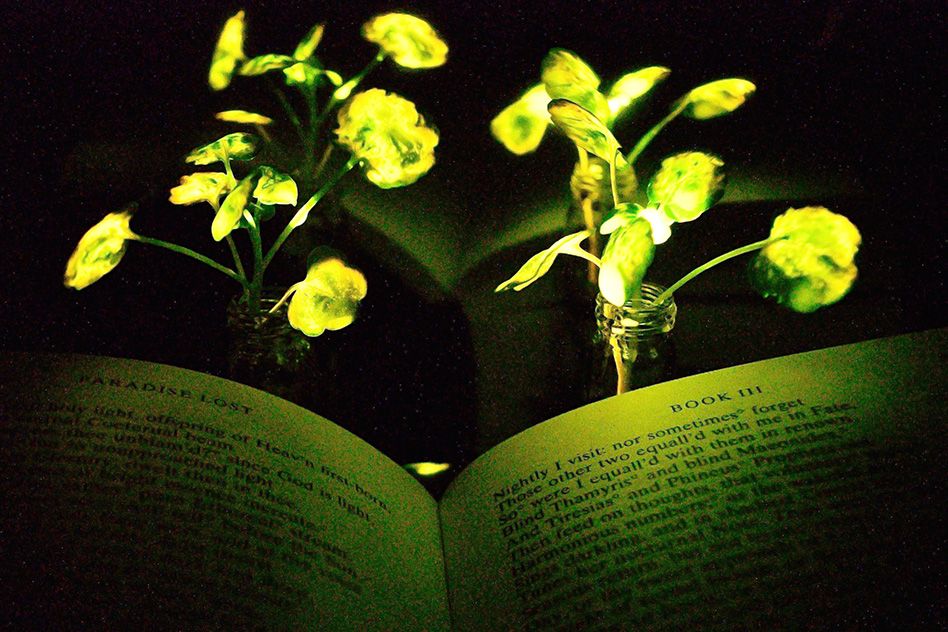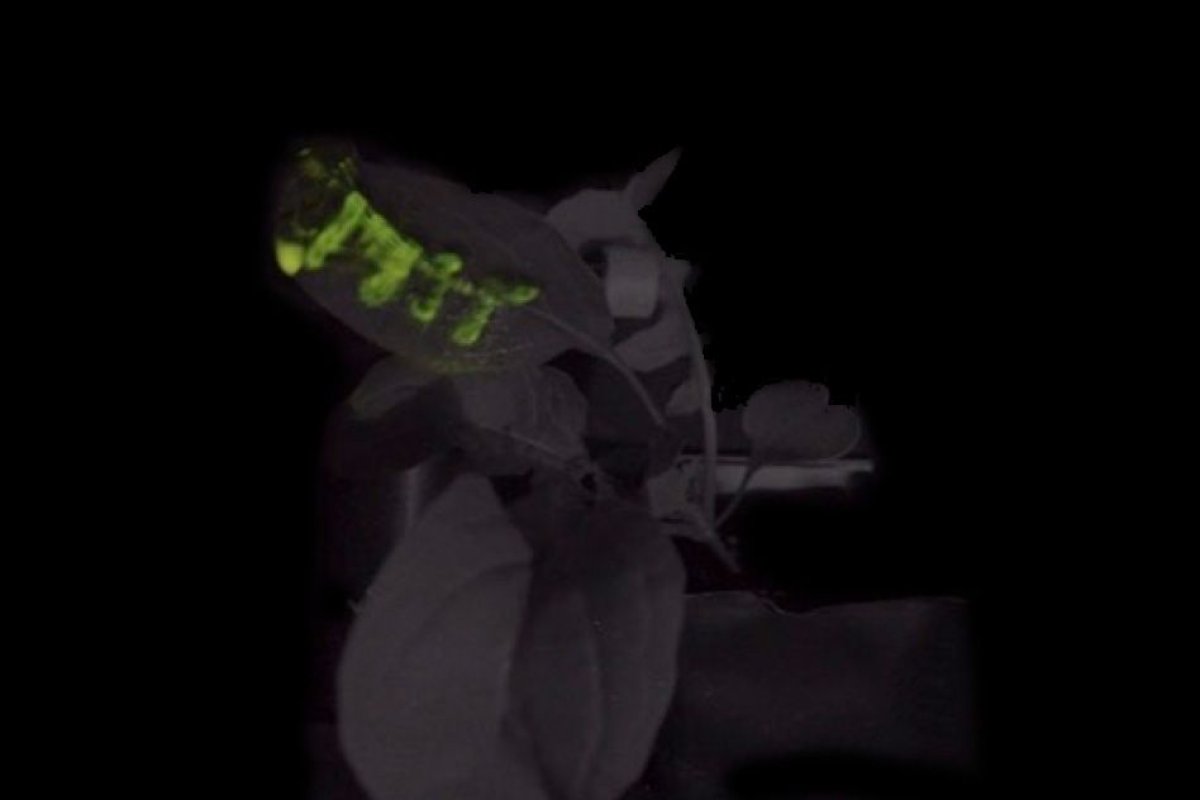
What if you could read a book by the glowing light of a plant? Engineers from the Massachusetts Institute of Technology are making that a reality. Specialized nanoparticles embedded into the leaves of a watercress plant cause a dim light to glow from the plant for nearly four hours.
The light from one 4-inch watercress seedling is about one-thousandth the amount needed to read by, but further optimization can improve how much light is emitted and for how long. Eventually, the plant could function as a desk lamp which you don't have to plug in, according to chemical engineering professor at MIT and senior paper author Michael Strano.
This research—plant nanobionics—has huge implications for reducing energy use. Lights alone account for about 20 percent of worldwide energy consumption, according to the researchers. Further optimization could one day lead to plants that could illuminate entire work spaces or sprays that can be coated onto trees to transform them into streetlights. The study, led by postdoctoral researcher Seon-Yeong Kwak and published in Nano Letters last month, builds upon previous high-tech plant research, like spinach that can detect explosives or plants that can monitor drought conditions.
"I like to say that [the plants are] doubly carbon negative," Strano told Newsweek.
The way the latest adapted plant works is by using the enzyme called luciferase which makes fireflies glow. The luciferase and another molecule, luciferin, interact with another enzyme to create the glow. The two enzymes and molecule are put into nanoparticles, which are embedded into the plant. One particle releases the luciferin into the plant cells, where the luciferase triggers the chemical reaction that causes the glow to occur.
Plants have several advantages as models for this type of technology. They soak up sunlight—which is how they get their energy—but they can also store that sunlight. "They are really the combination of a solar cell and a battery," Strano said.
Plants can also self-repair and are already adapted to the outdoor environment, he said. "So, for example, if you leave your iPhone outside in the rain and in the cold and so forth, you have to make special engineering precautions to make sure it doesn't break," he said. The plants, however, can take outdoor conditions.

Next, the scientists hope to further optimize the plant, including balancing the reaction rates between the chemical reaction they have created and the rate of the plants' production of fuel.
"When those match, you'll have the optimal usage," he said. "If your reaction is too slow, essentially, you'll have a lamp that's too dim. If the reactions are too fast, then you're wasting the fuel inside the plant."
"It's a balancing problem," he added.
Just in the early efforts of this project alone, scientists improved the glow-time from 45 minutes to 3.5 hours. They believe it's feasible to fuel the illumination of the plant through its entire lifetime. Plus, the nanoparticles used to make the plants glow are generally regarded as safe by the Food and Drug Administration. Similar particles are used in medicine.
Uncommon Knowledge
Newsweek is committed to challenging conventional wisdom and finding connections in the search for common ground.
Newsweek is committed to challenging conventional wisdom and finding connections in the search for common ground.
About the writer
Sydney Pereira is a science writer, focusing on the environment and climate. You can reach her at s.pereira@newsweekgroup.com.
To read how Newsweek uses AI as a newsroom tool, Click here.








